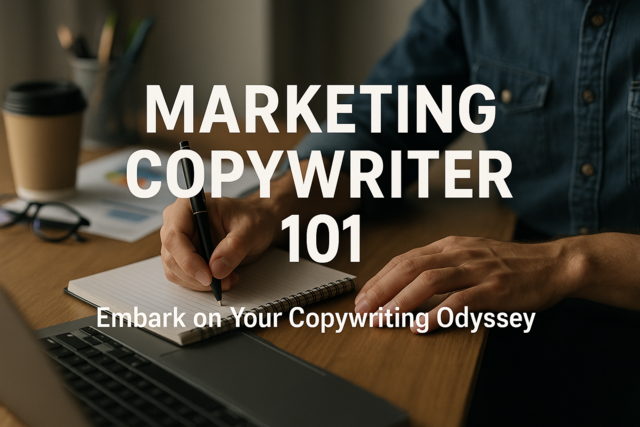This is the first step in starting a strategic plan for your business. Whether your organization is 100 years old or just beginning, this is the first step in strategic plan development. For some organizations, this step will be revisiting and possibly rewriting your mission statement, for others, this will be the first time constructing the statement.
Mission statements should be informational for the leaders, employees, and the customers. The statement should concisely talk about the organization's direction and reason for its existence, and its ideals. The statement should be future looking and not stuck in the here and now. Don't leave yourself at a "dead end with nowhere to turn" with your statement. Be accurately broad minded with the words being used in the statement. An example would be the terminology used for a trucking business. The company is not in the "trucking" business but in the asset relocation business. Do not limit your growth with your mission statement. What if your organization were to grow and incorporate aircraft or drones into its business. Saying you were in the trucking business would not leave room for upcoming technology or other avenues of expansion. By saying you were in asset relocation the organization also could get into internet data systems with expertise in transporting data from one network to another or something along those lines. The point is to be accurate but do not limit your organization with the wrong wording.
There are some organizations that call the mission statement old fashion and have done away with them. Part of the reason is because organizations quit spending time developing their statements, which resulted in generic, bland, useless statements that could fit any organization on a city block. The result from this lack of defining effort was the statement known as the mantra. A mantra statement is one sentence that defines an organization. A great example of a mantra comes from Nike. Nike's "Just Do It," is memorable and says it all � where they are going, what they are inspiring their customer to do, and what they plan for the future � to just do it.
An organization's vision statement is a vivid painting of an organization as it implements its strategic plan. It's a word picture that inspires everyone and does not have to be saddled in the here and now but can be more of a saying that could be found on an inspirational poster for the organization to aspire to.
Value statements are growing in importance, especially in today's dynamic environment where organizations are finding it extremely important for strategic plans to guide their organization in an ever-expanding global market. The value statement is the ideals and beliefs that motivate the leaders and employees of an organization and are the essential priorities behind the leadership's decisions.
The Mission Statement
Everyone knows a company's business plan is important. Without a plan investors will totally ignore you and your business. What can be as important as the business plan is an organization's mission statement. The mission statement is an organization's business plan in a nutshell � a summarizations of goals, philosophies, products, services, technology, etc. � every level of the organization. It should inspire. The statement should have sizzle. It should paint a clear picture for the organization's future. It should use colorful language that portrays positive action and a golden future.
Too many times leaders breeze through or completely overlook the mission statement, or they relegate it to underlings who do not understand every facet of the organization. What happens is the statement is written using simple and vague language. What is written is a mission statement that is generic in nature at best, and could fit any number of organizations. The statement is useless as a tool for employees to know what's important in the organization and where their priorities should be aligned. A generic statement does not provide any useful information to an organization's customers either. Basically, a plain statement that sounds good but does not say anything substantial or informative leaves everyone with their head either buried in the sand or stuck in the clouds � the statement gives no direction. So make sure the mission statement is unique to your organization alone and cannot be used by your competitor. This is a good sign you have a useful mission statement.
In about three sentences, a mission statement should tell everyone, what the business is about, its ideals, and where the organization is headed, and how it plans on getting there. In essence, it explains why an organization exists and its purpose for being there. The statement presents the organization's image to the public. For this reason, time should be taken to ensure the proper words are used that portrays an accurate image of the organization and its future plans. Along the same lines, the phrases used should set an order of priorities for the leaders and employees about the products and services delivered by the organization. Remember, it's a succinct statement that outlines an organization's purpose, plan, and priorities.
Mission Statement Do's and Don'ts
-
Do use specific language familiar within your organization
-
Don't use clich�'s or slang terms
-
Do use verbs that will provoke action
-
Don't use stale language and the words "if" and "of"
-
Do have a phrase that explains why the organization exists
-
Don't answer only the" what" of the organization
-
Do use precise succinct wording
-
Don't use rambling phrases that leads no where
-
Do use wording that is memorable and has rhythm and flow
-
Don't use tongue twisting twaddle
-
Do create the illusion of an epiphany
-
Don't be half-witted in the statement
The Good, the Bad and the Ugly
Good � "Our mission is to be the leading global innovator, developer and provider of cleaning, sanitation and maintenance products, systems, and services. As a team, we will achieve aggressive growth and fair return for our shareholders. We will accomplish this by exceeding the expectations of our customers while conserving resources and preserving the quality of the environment." This is three solid, simple sentences that says where Ecolab INC wants to go and how they are going to get there. It addresses their business and it uses specific language to their business. Their statement uses action verbs and addresses shareholders, employees and customers.
Bad � "McDonald's brand mission is to be our customers' favorite place and way to eat and drink. Our worldwide operations are aligned around a global strategy called the Plan to Win, which center on an exceptional customer experience � People, Products, Place, Price and Promotion. We are committed to continuously improving our operations and enhancing our customers' experience." The first sentence starts the statement off with a reasonably clear picture, but then the Golden Arches loses its signal and becomes really hazy with catch phrases and a list of catch words to try and paint a picture, but doesn't really say anything. The last sentence is true McDonald's branding � that sentence has made the fast food restaurant the giant in the industry it is today.
Ugly "The Global Beauty Leader We will build a unique portfolio of Beauty and related brands, striving to surpass our competitors in quality, innovation and value, and elevating our image to become the Beauty company most women turn to worldwide. The Women's Choice for Buying We will become the destination store for women, offering the convenience of multiple brands and channels, and providing a personal high touch shopping experience that helps create lifelong customer relationships. The Premier Direct Seller We will expand our presence in direct selling and lead the reinvention of the channel, offering an entrepreneurial opportunity that delivers superior earnings, recognition, service and support, making it easy and rewarding to be affiliated with Avon and elevating the image of our industry. The Best Place to Work We will be known for our leadership edge, through our passion for high standards, our respect for diversity and our commitment to create exceptional opportunities for professional growth so that associates can fulfill their highest potential. The Largest Women's Foundation We will be a committed global champion for the health and well-being of women through philanthropic efforts that eliminate breast cancer from the face of the earth, and that empower women to achieve economic independence. The Most Admired Company We will deliver superior returns to our shareholders by tirelessly pursuing new growth opportunities while continually improving our profitability, a socially responsible, ethical company that is watched and emulated as a model of success." This is too long, too many catch words and phrases, but it does continuously say Avon wants to be the best.
The Vision
Vision statements say where your organization is going, hence why the statement is important for the strategic plan. The mission statement is for the here and now and explains why an organization exists. Mission statements are for both employees and customers while the vision statement is written to inspire and provide a roadmap to the future for employees.
Creating the vision statement for your organization is truly the fun part of strategic planning since most of the rules are thrown out the window. Originally, vision statements were written after the strategic plan had been implemented to describe the ideal organization so everyone knew what they were trying to achieve. Today the vision statement has taken on more of the role as a motivational tool organizations use to inspire its employees to achieve idealistic goals that for the most part are hopelessly impossible to achieve. They are simple but inspiring sentences that should say where the organization wants to be in the future, and hopefully provides motivation for the employees to strive for that ideal. The only true rule in writing the vision statement is to keep it clear and concise.
Look at Habitat for Humanity's vision statement � "A world where everyone has a decent place to live." It's a great summarization of the organization's purpose for existence and it says their wish for the future. Vision statements should be vivid, memorable, and that is the reason for keeping it short � it's easier for people to remember. If they begin to ramble and get past eighteen to twenty words then the statement is trying to say too much. The statement should summarize the organization's main goal in an aspirational way. Look at the Human Rights Campaign's vision statement -- "Equality for everyone." Their statement says it all in three words. As noted in the examples, it is okay to dream big in the statement and at the same time the statement shows the real reason both of these organizations were created. So have a brainstorming session and set high standards for your organization with a far-reaching vision statement.
As previously stated, the vision statement tells employees where the organization is heading in the future. For this reason, the statement is important for guiding employees in their decision making so the vision statement must align with the organization's mission statement and overall business plan. Before writing the vision statement, it's important to know where the company stands at that moment � how it stacks up against the competition, the organization's overall health, and its talent pool. Also know the organization's realistic and planned goals for the immediate future. This will enable the statement to outline key objectives for the employees without outlining a how to mantra everyone must follow. This frees up various departments within the organization to write their own plan that fits their specific role to meet the goal set forth in the vision statement.
Here are a few simple rules to follow when writing your vision statement:
Outline goals 5, 10 or even 20 years in the future
Use words that evoke emotion and action
Avoid words and phrases that do not show definite action � hope to, might, would like to�
Use present tense � avoid past tense or future tenses � this is for the here and now to guide into the future.
Value Statement
The value statement guides the organization and gives direction to its decision making process. The organization's values are their beliefs and provide direction to how employees are to act and the type of behavior their decisions, instructions, and actions are to reflect. Values are the virtues the organization desires its employees to adhere to. They are the organization's beliefs and morale qualities that should pervade every fiber of its being.
To begin writing such a statement, a quick survey is needed that should include members of the organization's leadership and management. The questions should simply ask about their beliefs and the morale attributes they adhere to in day-to-day activities. Include questions that ask what morale codes they use when making decisions. Ensure the questions will result in answers that will provide the organization's core values. Once the results are in, each virtue, belief, etc., should be listed and the leadership team should prioritize the answers in order of importance for the organization's value system.
Unlike the vision statement, the organization's value statement does not have to be only one value and sentence. There can be more than one value � there can be many but they should be listed in order of importance. The values should reflect not only the organization's employees, but also its customers, and shareholders. Here is an example of listing values in order of importance. These are from a Mennonite church:
1. We value the Scriptures as our guide to faithful living.
2. We value lifelong spiritual growth in the way of Jesus.
3. We want to be a worshiping community that loves one another.
4. We want to share God's love with others in word and service.
5. We want to be a light of hope here and around the world.
Where the vision statement was written realizing it probably was unattainable, the value statement should be lived and practiced daily in the organization. If the organization does not practice its values, it could end up being another Enron. In November, 1997, Enron bought out a business partner's portion of a company. Enron then sold the stake to a company it created that was ran by an Enron officer. That was how the financial shell game of lies and deceitful financial practices that led to the company's collapse began.
Value statements should guide the organization so it does not become another Enron. The value statement will guide the leadership towards making decisions that properly align with the organization's mission and vision. The organization's values should permeate throughout its activities and help its leadership make ethical decisions that will achieve its mission.

























